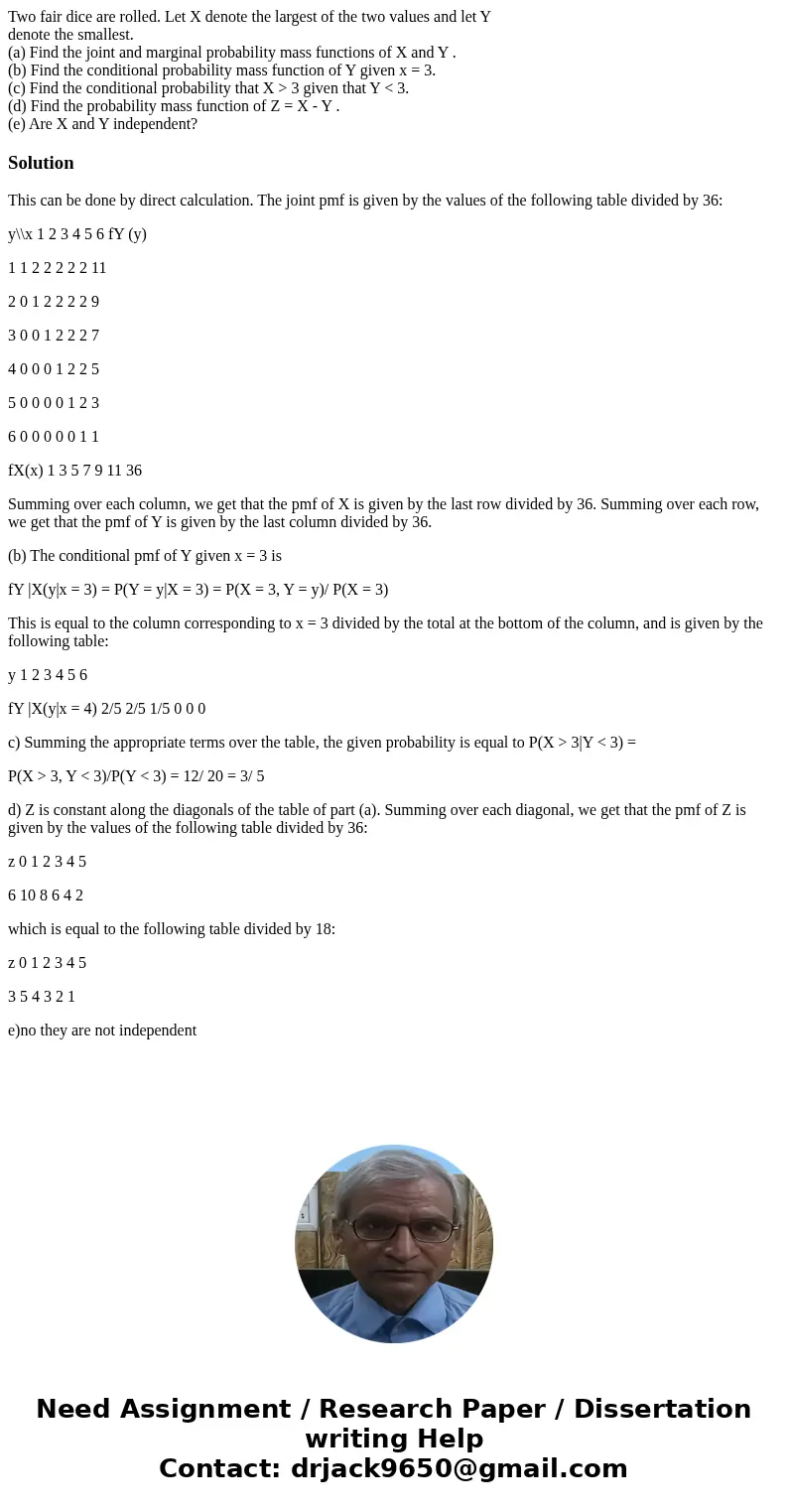Two fair dice are rolled Let X denote the largest of the two
Two fair dice are rolled. Let X denote the largest of the two values and let Y
denote the smallest.
(a) Find the joint and marginal probability mass functions of X and Y .
(b) Find the conditional probability mass function of Y given x = 3.
(c) Find the conditional probability that X > 3 given that Y < 3.
(d) Find the probability mass function of Z = X - Y .
(e) Are X and Y independent?
Solution
This can be done by direct calculation. The joint pmf is given by the values of the following table divided by 36:
y\\x 1 2 3 4 5 6 fY (y)
1 1 2 2 2 2 2 11
2 0 1 2 2 2 2 9
3 0 0 1 2 2 2 7
4 0 0 0 1 2 2 5
5 0 0 0 0 1 2 3
6 0 0 0 0 0 1 1
fX(x) 1 3 5 7 9 11 36
Summing over each column, we get that the pmf of X is given by the last row divided by 36. Summing over each row, we get that the pmf of Y is given by the last column divided by 36.
(b) The conditional pmf of Y given x = 3 is
fY |X(y|x = 3) = P(Y = y|X = 3) = P(X = 3, Y = y)/ P(X = 3)
This is equal to the column corresponding to x = 3 divided by the total at the bottom of the column, and is given by the following table:
y 1 2 3 4 5 6
fY |X(y|x = 4) 2/5 2/5 1/5 0 0 0
c) Summing the appropriate terms over the table, the given probability is equal to P(X > 3|Y < 3) =
P(X > 3, Y < 3)/P(Y < 3) = 12/ 20 = 3/ 5
d) Z is constant along the diagonals of the table of part (a). Summing over each diagonal, we get that the pmf of Z is given by the values of the following table divided by 36:
z 0 1 2 3 4 5
6 10 8 6 4 2
which is equal to the following table divided by 18:
z 0 1 2 3 4 5
3 5 4 3 2 1
e)no they are not independent

 Homework Sourse
Homework Sourse